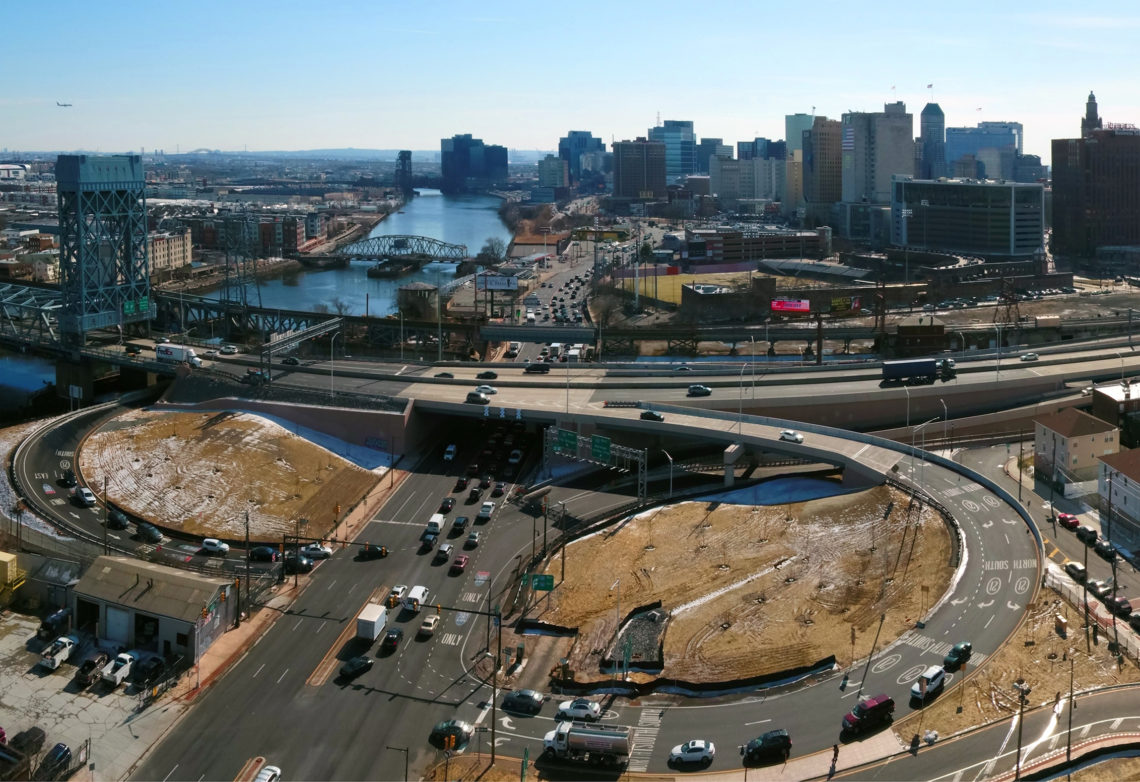
Route 280, Route 21 Interchange Improvements Project in Newark
The New Jersey Department of Transportation helped Newark alleviate congestion, improved safety, and promoted the economic growth of the city.
The department leaned heavily on collaboration with a local community to creatively design and stage an important interchange improvement project, resulting in a project that incorporated fewer traffic impacts and community supported context-sensitive designs.
The $95 million federally-funded Route 280, Route 21 Interchange Improvements project was a complex, urban interchange reconstruction project in the City of Newark, New Jersey. Construction began in September 2015, repaired deteriorating ramp and mainline structures, and built new ramps to provide a fully integrated interchange between heavily trafficked I-280 and Route 21.
The project built four new bridges, rehabilitated two additional bridges within the interchange, and upgraded existing infrastructure, such as highway lighting, traffic signals, signing, and landscaping. This particular project posed a number of challenges given the magnitude of the scope of work necessary and its physical location in an urban environment with a close proximity to residential neighborhoods. This project required creative design and construction staging, as well as a robust community outreach effort in order to minimize traffic disruption to a busy highway.
NJDOT worked closely with the community to incorporate context sensitive design within the budget constraints for the project. This was accomplished through numerous public meetings including a workshop specifically focused on the aesthetic elements of the project in the Grant Street/8th Avenue neighborhood. Residents voted on various treatments including streetscaping, landscaping themes, and wall treatments, which included decorative concrete panels inspired by local architecture.
This project also presented opportunities for collaboration among NJDOT, the leadership at The House of Prayer, and the Plume House, which is the second oldest building in Newark, and are both immediately adjacent to this project. The Newark mitigation strategies were jointly developed and incorporated into the project to protect the structures during construction and in the future.
Read additional stories from this state:
2020


